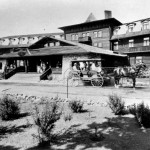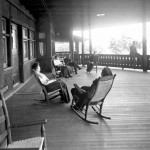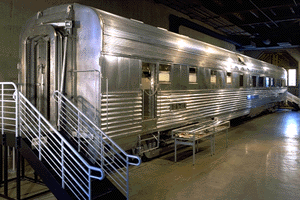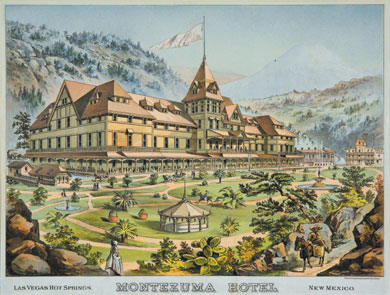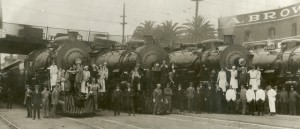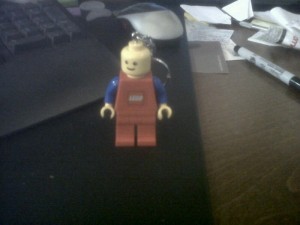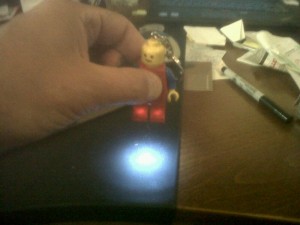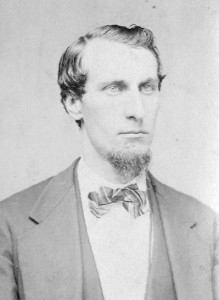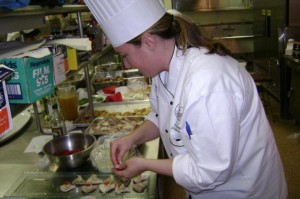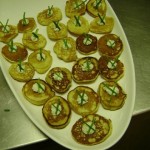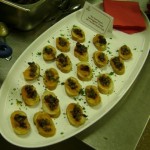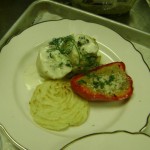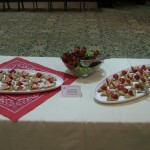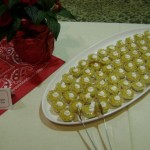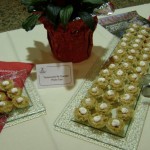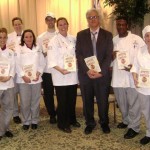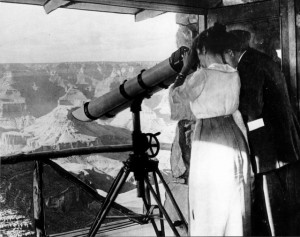13
In all the years I have been researching and writing about Fred Harvey and the Southwest, the question I am asked the most is: how do you get reservations at El Tovar, the historic Harvey hotel at the lip of the Grand Canyon? It is a question people have been asking for well over a century. I explain this, along how to tour the entire Fred Harvey route from Chicago to LA, in the appendix to Appetite for America. But here’s a more in-depth insiders guide to getting a room at what is arguably America’s most in-demand hotel.
El Tovar is run by Xanterra, the company that bought out Fred Harvey, under contract with the National Park Service. The same is true for the four other South Rim hotels, Bright Angel Lodge (designed by Mary Colter in the 1930s), Thunderbird Lodge and Kachina Lodge right on the rim, Maswik Lodge and Yavapai Lodge, a short walk away, and Phantom Ranch, the rugged lodge at the bottom of the Canyon.)
While there are many other places to stay near the South Rim, these four are the only ones that allow you to actually sleep (and, more important, wake up) at the South Rim. But if you can get reservation and you can afford it, El Tovar is premier place to stay at the Grand Canyon. And its restaurant is, by far, the best place to eat there.
The problem, of course, is that millions of people come to the Grand Canyon from all over the world every year. And they all want to stay and eat there. So, over the years, they’ve developed a rather arcane system of doling out the South Rim hotel reservations.
On the first day of every month, at exactly 11:00 AM Mountain Time, Xanterra opens for reservation every room on the South Rim–for a one-month period exactly 13 months in the future. So there are people who begin feverishly calling the Xanterra reservation number–888-297-2757 (toll free in US), 303-297-2757 (outside the U.S.)–at that precise moment until they get through to an operator. Some call on cell phones and landlines simultaneously–families have been known to do this together from multiple locations–because it is a first-come-first-served feeding frenzy and it can only be done by phone. (It’s like buying Springsteen tickets from Ticketmaster before the internet was invented.)
If you don’t get through in the first 15 or 20 minutes, or even the first hour or two, don’t be discouraged–the most in-demand rooms, because there are so few of them, are actually the rooms that campers dream of at Phantom Ranch (since, everyone else visiting the canyon floor sleeps on the ground.) It is still possible to reserve prime rooms at El Tovar–even one of the four amazing suites–an hour or even longer after the rooms are released.
Before you make the call, you should decide just how negotiable your travel plans are–it’s not uncommon for people to plan entire western trips around the best days when the best rooms are available at El Tovar. Weekends and holidays are most in-demand. Standard rooms–which run $174-$205–will probably be easily available for any day the entire 24 hours after the rooms are opened for reservations. Deluxe rooms, at $268, go more quickly. And the four balcony suites–three of which have full canyon views–go the quickest, in part because they are surprisingly reasonable at $321-$426. (The Fred Harvey Suite, the Mary Colter Suite and the El Tovar Suite overlook the canyon; the Charles Whittlesey Suite has a partial canyon view, but also overlooks the park’s forest and has a huge balcony.) If you can afford it and your travel plans have some wiggle room, I’d suggest that when you get through that operator, you start the conversation by asking which suites are available which days, and work backward from there.
However–and this is a big however–while it sounds like if you haven’t planned 13 months in advance you can’t stay at the canyon, that actually isn’t true. Because people make these reservations so far out, they also tend to cancel some of them–some long in advance, some at the last minute. So it is ALWAYS worth checking the moment you think you want to go the canyon, to see what is available. And if you end up not being able to get a reservation on the South Rim itself, it is worth checking again right before you go–and even the day you are arriving–to see if there are cancellations, because there often are.
If you want to eat dinner at El Tovar, you also have to make reservations far in advance–they take them up to six months before you arrive, if you’re going to be staying at El Tovar, and up to 30 days in advance if you aren’t. Call 928.638.2631, ext. 6432 or e-mail to eltovar-dinner-res-gcsr@xanterra.com. Breakfast and lunch don’t require reservations, but dinner does, especially on weekends and holidays.
And, of course, while you’re there, if you’re looking for a good book to read, you’ll find copies of Appetite for America in all the Grand Canyon stores and gift shops.
